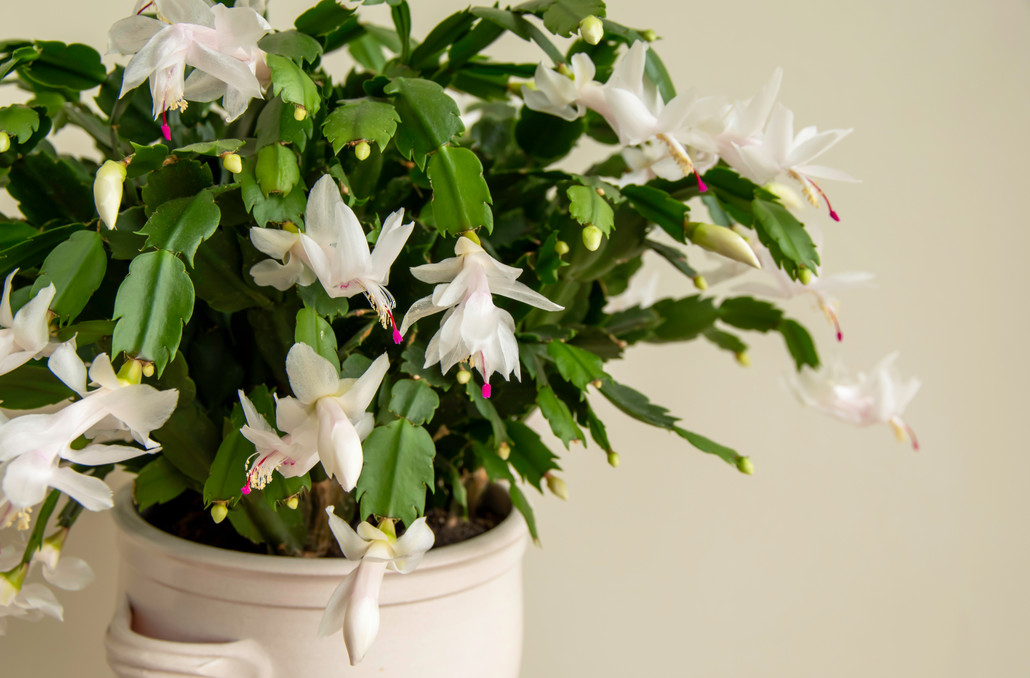
Houseplants to Brighten Up Your Winter
Posted by Jackson Distelrath, Wedel's Houseplant Expert on 3rd Dec 2024
Houseplants to Brighten Up Your Winter
Here's a great way to brighten your winter days: grow these beautiful houseplants!
We have 3 easy-care choices highlighted here that will add beauty and color to your indoor landscape.
Christmas Cactus
Christmas cactus are not like other desert cactus that require large amounts of light, and perform the best in bright indirect light.

Fun Facts:
- Despite being a cactus, this plant calls the tropical rainforests of Brazil its home
- Christmas cactus are what are called “epiphytic”, meaning that they grow on other plants, usually the crevices and bark of large trees
- Blooming is triggered on Thanksgiving and Christmas from longer and cooler nights, and the blooming typically lasts for 4-6 weeks
- Plus, they’re very easy to care for:
- Water this plant when the soil feels dry to the touch. They can tolerate some drought, but do not handle soggy conditions well, especially during the winter months
- Feed with a Shultz Blooming Plant Food once a month during the growing season (while the plant is not blooming) to encourage blooms
Norfolk Pine (Star pine, Polynesian Pine)
Norfolk pines will struggle without bright indirect light. If outside in the warmer months, place somewhere ideally with morning sun.

Fun Facts:
- Norfolk pines are endemic to Norfolk Island off the coast of Australia, meaning that they do not naturally grow anywhere else in the world.
- The mature height for a wild Norfolk pine can reach up to 200 feet tall, and their trunks can be as much as 10 feet wide!
- Despite being a “pine”, Norfolk pines are tropical trees, and cannot survive temperatures below freezing.
Care:
- Norfolk pines prefer moist soil, but do not tolerate being wet for too long. Give this plant a deep watering whenever the first inch or two of the soil feels dry.
- Norfolk pines can be kept outside until nighttime temperatures reach below 50 degrees.
- Fertilize in the spring and summer months once a month with Schultz Plant Food
Amaryllis Bulbs
Amaryllis need lots of light—6 hours is ideal. Without adequate light, the flower stalks will stretch to reach light, making them leggy and weak. Use grow lights if natural light isn’t available.

Amaryllis can give you many years of enjoyment if you follow these tips:
* Choose a container about an inch wider and deeper than the amaryllis bulb. Make sure the container has a drainage hole.
* Fill the pot about half full using Fertilome potting mix that will promote drainage. Amaryllis bulbs can rot if they sit in soggy soil.
* Place the bulb in the pot on top of the soil, adding more soil around the sides of the bulb. Leave the top third of the bulb exposed above the soil line.
* Water the bulb after planting. Don’t water it again until you see signs of growth, and then water sparingly.
* Once flower stalks form buds, begin watering as needed. Check the top two inches of soil. If dry, it’s time to water.
* When the flower finishes blooming, cut off the spent flowers, but keep the green stem and additional buds. Do not remove the leaves.
Amaryllis Picture & Article from the National Garden Bureau
Christmas Cactus & Norfolk Pine article by Jackson Distelrath, Wedel's Houseplant Expert
